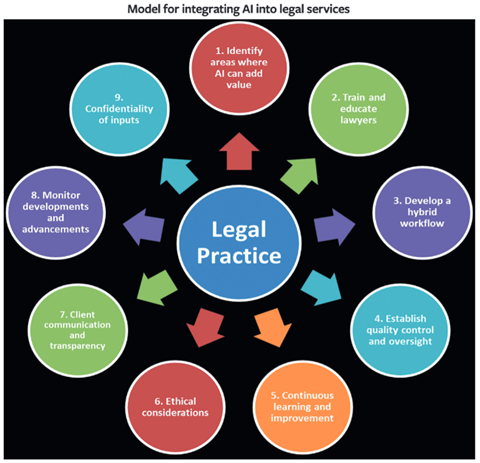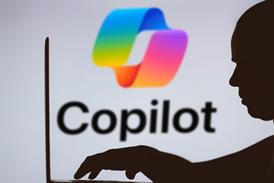How to integrate AI Copilots
Legal AI existed before ChatGPT brought generative AI to the collective consciousness in November 2022, though often it was more ‘machine learning’ than true AI. Machine learning is a specific subset of AI that involves training a model using data, so it can make predictions or decisions without being explicitly programmed to do so. It was being used in legal solutions for document analysis, legal research and practice management.

However with the advent of generative AI, numerous vendors have entered the market and existing vendors have upgraded their solutions with AI capabilities. A critical issue is that vendors need to be able to assure customers that the information they put into AI will be kept confidential.
Some legal AI providers include:
1. Casetext: Provides AI-powered legal research tool CARA, helping lawyers find relevant case law faster
2. Kira Systems: Machine learning software that extracts and summarises information from contracts and documents
3. Blue J Legal: Utilises AI to predict court outcomes, aiding in legal decision-making and research
4. Lawgeex: Streamlines contract review process using AI, reducing time spent on routine legal tasks
5. Luminance: AI platform enhancing due diligence and compliance, handling large volumes of legal data
6. Everlaw: AI-powered ediscovery and litigation platform, helping law firms manage and analyse data
7. LegalSifter: Combines AI and expertise to review contracts
8. Lex Machina: Provides AI-powered litigation analytics. Lex Machina’s software can be used to track cases, identify trends and predict outcomes
9. Harvey: Uses generative language models to help lawyers with research, drafting, analysis and communication
10. Robin: Uses AI to help lawyers draft and negotiate contracts
11. Ironclad: An AI-powered contract lifecycle management platform that helps companies create, negotiate and manage contracts more efficiently
Integrating AI Copilots into legal services
The future seems to be lawyers not being replaced by AIs but rather working with AI Copilots. The upcoming launch of AI Copilots across Microsoft products like Outlook and Word will make this a reality sooner rather than later. All legal teams will need to assess how best to integrate AI into their practice. Below is a suggested framework for such integration.
Integrating AI Copilots into the work of lawyers can be done effectively by following a proper model. The goal should be to leverage AI capabilities to enhance efficiency, accuracy and productivity while maintaining a strong foundation in legal knowledge and skills. Here is a suggested model for integrating AI Copilots into legal work:
1. Identify areas where AI can add value: Determine specific tasks and processes where AI Copilots can be most beneficial. These may include legal research, contract review, document analysis, due diligence, drafting and routine correspondence.
2. Train and educate lawyers: Provide training and education for lawyers on how to use AI Copilots effectively, understanding their limitations and identifying potential pitfalls. This will help lawyers make the most of AI tools while remaining aware of potential challenges.
3. Develop a hybrid workflow: Create a workflow that combines the strengths of AI Copilots with the expertise of human lawyers. Use AI to automate routine tasks and analyse large volumes of data, while human lawyers focus on higher-level decision-making, critical analysis, and creative problem-solving.
4. Establish quality control and oversight: Implement a quality control system that includes strict review and oversight of AI-generated work by experienced lawyers. This will help ensure the accuracy and reliability of AI-generated output, as well as identify any errors or inconsistencies that may arise.
5. Continuous learning and improvement: Continuously evaluate the performance and effectiveness of AI Copilots, and update or refine their algorithms and training data as needed. Encourage feedback from lawyers who use the AI tools to identify areas for improvement and make necessary adjustments.
6. Ethical considerations: Be mindful of ethical obligations, including client confidentiality, data privacy and professional responsibility. Develop guidelines and protocols to ensure AI Copilots are used ethically and in compliance with relevant regulations and professional standards.
7. Client communication and transparency: Clearly communicate to clients how AI Copilots are being used in their legal matters and the benefits it brings.
8. Monitor developments: Stay up to date with the latest developments in AI and legal technology.
9. Confidentiality: Hopefully, by the time we have AI Copilots in the enterprise technology stack, the issue of confidentiality will have been solved – that is, the vendor will be able to confirm that the AI is not compromising the data put into it in any way. However, until that time, if your legal team is using generative AI in any way, they should be vigilant to ensure no confidential information is inputted into the AI.
By following this model, lawyers can effectively integrate AI Copilots into their work, leveraging their capabilities to enhance efficiency and productivity while maintaining a strong foundation in legal knowledge and skills.

Preparing for the AI-driven future of legal services
As we embrace the AI-driven future of legal services, the importance of ongoing learning and adaptation cannot be over-emphasised. Lawyers need to understand that AI is a tool to enhance their practice. Law firms and in-house legal teams must foster an AI-ready culture that encourages curiosity, innovation, and digital literacy.
Investment in technology and strategic partnerships is critical to facilitate seamless AI integration. Firms need to explore collaborations with tech companies and AI specialists to harness the power of AI effectively and ethically. It is not merely about adopting AI, but about understanding how to leverage it in ways that add value to clients and streamline operations.
Finally, the legal profession must be open to change, prepared to reimagine service delivery in light of AI. This does not mean discarding traditional methods outright, but finding a balance, blending human expertise with AI capabilities to provide more efficient, innovative and personalised legal services.
The key lies in integrating AI into legal services not as a replacement for lawyers, but as an augmenting tool that empowers them to better serve their clients.
Nick Abrahams is global co-leader, digital transformation practice, at Norton Rose Fulbright, and co-founder of online legal service LawPath. Abrahams is a professor at Bond University, where he teaches The Breakthrough Lawyer, an online coaching programme designed to help lawyers grow as legal leaders and innovators that will be available to UK lawyers in 2024. This article is the last in a three-part series




























No comments yet